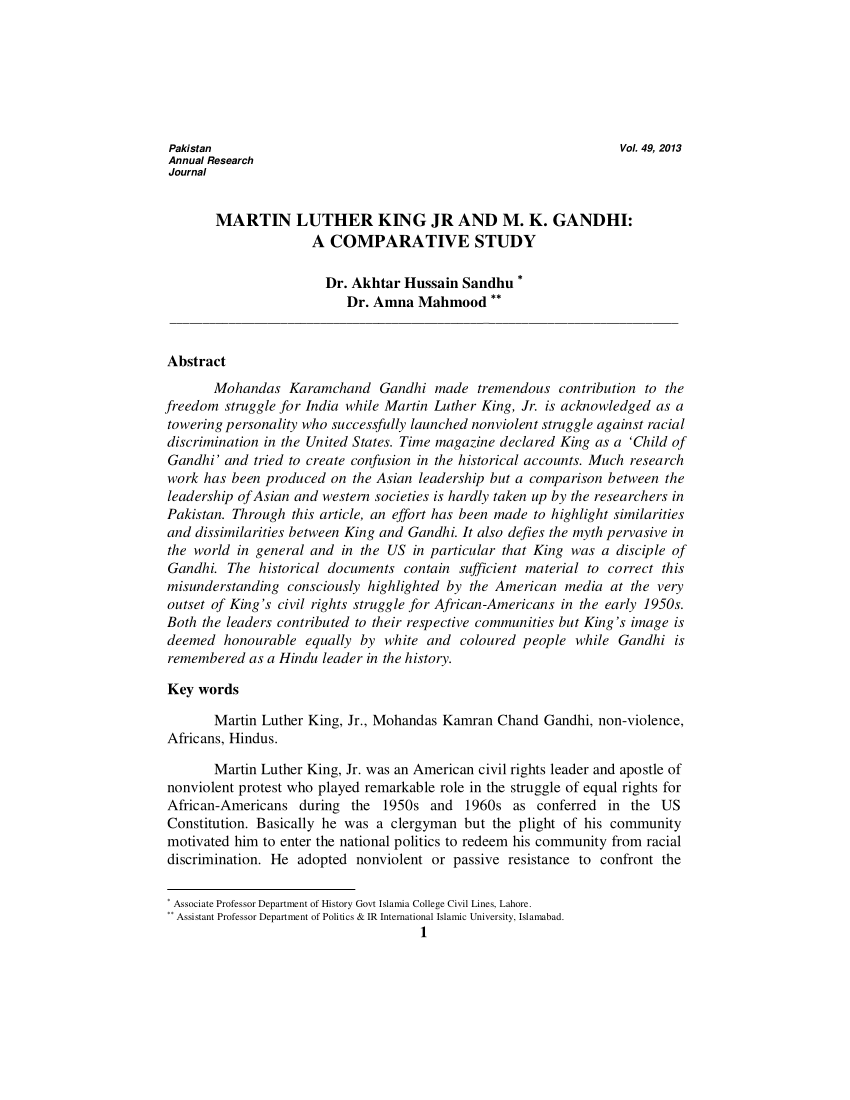Martin Luther King Jr. and Mahatma Gandhi were two of the most prominent civil rights activists in history who used nonviolent methods to fight against injustice and inequality. While they had different religious beliefs and used different means of protest, both King and Gandhi believed in the power of nonviolence and love to overcome hate and violence. Their impact on the world is undeniable, and their legacies continue to inspire and influence activists to this day. King’s use of nonviolent civil disobedience inspired many civil rights activists, and Gandhi’s success in freeing India from British rule inspired many independence movements in Asia and Africa.
Martin Luther King Jr. vs. Mahatma Gandhi: Examining the Similarities and Differences of Two Civil Rights Activists
Introduction
Martin Luther King Jr. and Mahatma Gandhi were two of the most prominent civil rights activists in the world. Both men used nonviolent methods to fight against injustice and inequality. While they lived during different times and in different parts of the world, they shared many commonalities in their beliefs and practices. This article will explore the similarities and differences between these two historical figures.
Background
Martin Luther King Jr. was born on January 15, 1929, in Atlanta, Georgia. He was a Baptist minister and social activist who played a key role in the American Civil Rights Movement during the 1950s and 1960s. King advocated for racial equality, and he is best known for his use of nonviolent civil disobedience to bring attention to the injustices suffered by Black Americans.
Mahatma Gandhi, on the other hand, was born on October 2, 1869, in Porbandar, India. He was a political and spiritual leader and is credited with India’s independence from British rule. Gandhi led a nonviolent resistance movement, known as satyagraha, which translates to “truth force.” He believed in passive resistance and nonviolent disobedience to bring change to society.
Beliefs
Both Martin Luther King Jr. and Mahatma Gandhi believed that nonviolent methods were the most effective way to bring about social change. They also both believed in the power of love and kindness to overcome hate and violence. In his book, Stride Toward Freedom, King said, “Nonviolence is the answer to the crucial political and moral questions of our time: the need for man to overcome oppression and violence without resorting to violence and oppression.” Gandhi echoed this sentiment, stating, “Nonviolence is a weapon of the strong.”
While both men were advocates for nonviolence, they held different religious beliefs. King was a Christian, and many of his speeches and movements were rooted in his faith. Gandhi, on the other hand, was a Hindu who believed in the principle of ahimsa, which is the avoidance of violence towards all living things.
Methods
One of the main similarities between King and Gandhi was their use of nonviolent methods to bring about social change. Both men believed that nonviolence was a powerful tool that could change hearts and minds. They used nonviolent resistance, civil disobedience, and peaceful protesting to bring attention to their causes.
However, they used different means of protest. King often led marches and boycotts, while Gandhi relied heavily on hunger strikes and fasting. Gandhi also used the practice of satyagraha, which involved noncooperation with the oppressor, rather than direct confrontation.
Impact
The impact of both Martin Luther King Jr. and Mahatma Gandhi can still be felt today. King’s use of nonviolent civil disobedience to bring about social change inspired many other civil rights activists around the world. His influence can be seen in the Black Lives Matter movement, which aims to end police brutality against Black Americans.
Gandhi’s success in freeing India from British rule inspired many other independence movements in Asia and Africa. His use of nonviolent resistance has been adopted by many activist movements around the world.
Conclusion
Martin Luther King Jr. and Mahatma Gandhi were two of the most influential civil rights activists in history. They shared many commonalities in their beliefs and methods, and both used nonviolence as a means to create social change. While they had different religious beliefs and used different means of protest, their impact on the world is undeniable. Their legacies continue to inspire and influence activists to this day.
